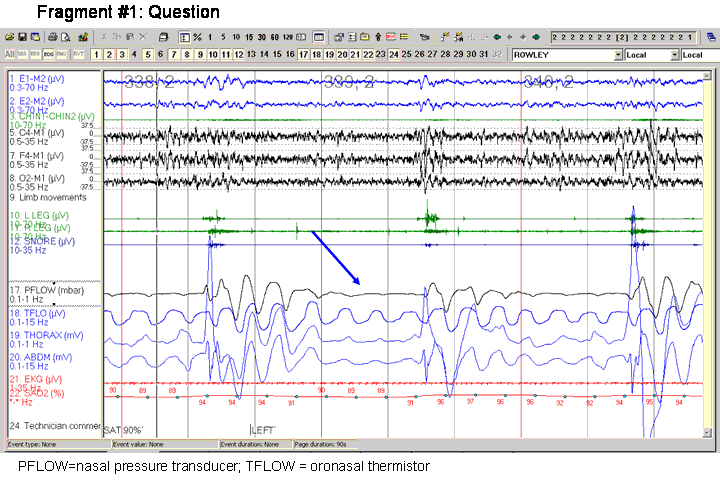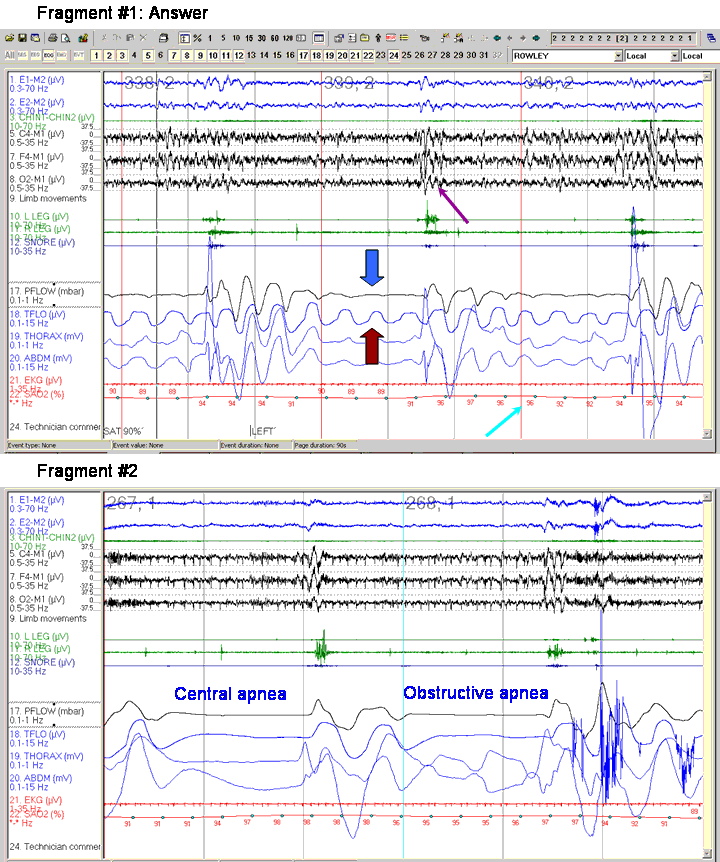Contributed by James A. Rowley, MD, Wayne State University, Detroit, MI
Hypopnea
Discussion: In the 2007 scoring manual, it is recommended all patients have both oronasal thermal sensor and a nasal air pressure transducer for the detection of respiratory events. The oronasal thermal sensor is the recommended sensor for the identification of apneas (absence of airflow) and the nasal pressure transducer is the recommended sensor for the identification of a hypopneas (decrease in airflow).
Therefore, an apnea can be scored only if there is the absence of airflow on the oronasal thermal sensor. If there is absence of flow on the nasal pressure transducer but reduced flow on the thermal sensor, the event is identified as a hypopnea. This rule is illustrated in the fragment. For the indicated event, there is no flow in the nasal pressure transducer signal (PFLOW, blue block arrow) but there is continued, though decreased, airflow in the thermal sensor (TFLOW, maroon block arrow). Therefore, this event is a hypopnea. Note also that the hypopnea is followed by both an arousal (purple arrow) and desaturation (aqua arrow).
The new scoring manual provides two definitions of hypopnea. The recommended definition is a drop in airflow ≥ 30% from baseline lasting for at least 10 seconds and associated with a ≥4% desaturation. The hypopnea in this fragment meets this definition (note that the desaturation is from 96% to 92%).
To illustrate an apnea, Fragment #2 is also presented. This is a 60-second fragment and shows a central apnea (left epoch) and an obstructive apnea (right epoch). Note that for both apneas, both the TFLOW and PFLOW signals are flat.
The reader is referred to the Redline reference for the rationale for the recommended sensors and event definitions.
Finally, note should be taken that both fragments show the new recommended EEG and EOG derivations. Both eye leads are referenced to M2 (right mastoid). There are now 3 EEG derivations, all referenced to M1 (left mastoid): the classic central and occipital leads (C4-M1 and O2-M1) and the newly recommended frontal lead (F4-M1).
References
The AASM Manual for the Scoring of Sleep and Associated Events. Westchester, IL: American Academy of Sleep Medicine, 2007.
Redline S, et al. The scoring of respiratory events in sleep: reliability and validity. J Clin Sleep Med 3:169, 2007.





